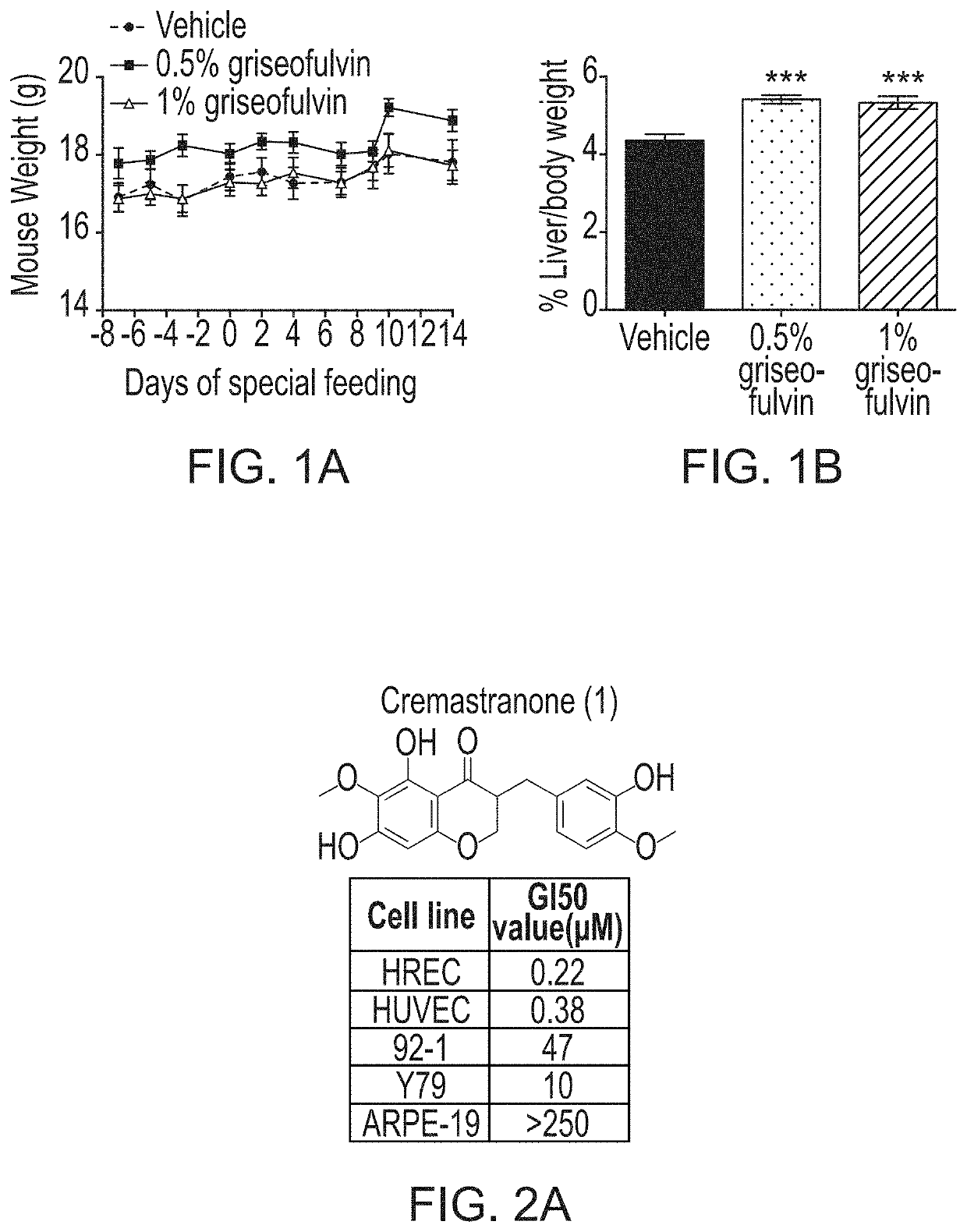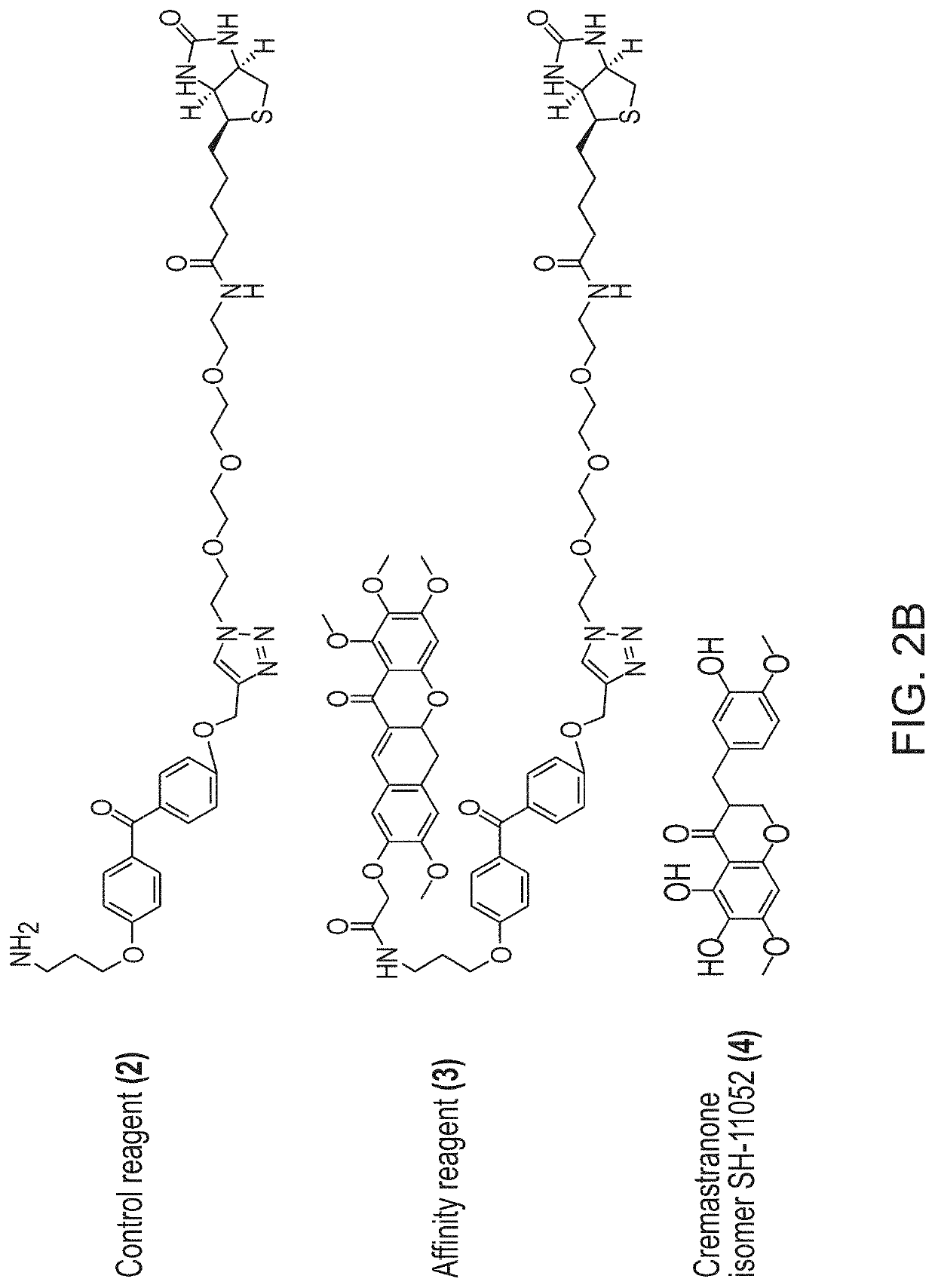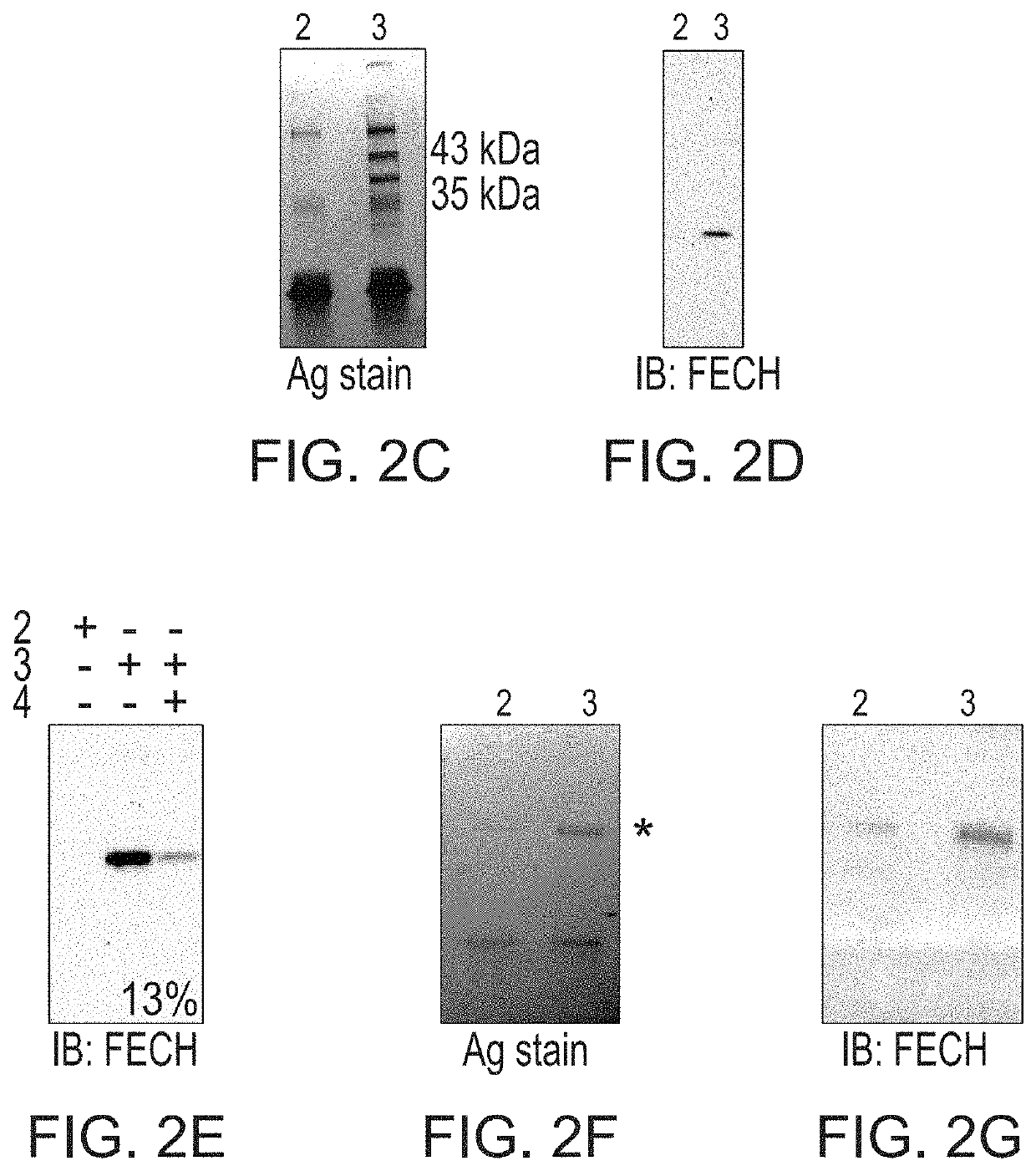Inhibition of ferrochelatase as an antiangiogenic therapy
a technology of ferrochelatase and antiangiogenic therapy, which is applied in the direction of lyases, enzymology, biochemistry apparatus and processes, etc., can solve the problems of rapid photoreceptor degeneration, fragile new blood vessel formation, and eventual fibrotic scarring
- Summary
- Abstract
- Description
- Claims
- Application Information
AI Technical Summary
Problems solved by technology
Method used
Image
Examples
examples 1-4
[0037]Materials & Methods
[0038]EBM-2 and IMDM growth media were purchased from Lonza (Walkersville, Md., USA). HRECs and Attachment Factor were purchased from Cell Systems (Kirkland, Wash., USA). Clonetics® HUVECs were purchased from Lonza. All endothelial cells were used between passages 5 and 8. Endothelial Growth Medium (EGM-2) was prepared by mixing the contents of an EGM-2 “Bullet Kit” (Cat no. CC-4176) with Endothelial Basal Medium (EBM) (Lonza). 92-1 and ARPE-19 cells were grown in RPMI and DMEM media supplemented with 10% FBS and 1% penicillin-streptomycin as described in Basavarajappa et al. J Med Chem 58, pp. 5015-5027 (2015); identity was confirmed by STR profiling. Click-iT TUNEL Alexa Fluor-594 imaging assay kit (Cat no. C10246) was purchased from Molecular Probes (Eugene, Oreg., USA). Monoclonal antibody against α-tubulin (DM1A), protoporphyrin 5-aminolevulinic acid, hemin, griseofulvin and L-arginine were purchased from Sigma-Aldrich (St. Louis, Mo., USA). N-methyl pr...
example 1
[0079]In this Example, protein modulators of angiogenesis were identified.
[0080]Photoaffinity chromatography was used to search for targets of the naturally occurring antiangiogenic compound, cremastranone (FIG. 2A), which has selective antiproliferative effects on endothelial cells. Protein binding partners of cremastranone were pulled down from a tissue lysate using immobilized affinity reagent, but not a negative control reagent (FIG. 2B). One of the two pulled down proteins was identified using peptide mass fingerprinting as ferrochelatase (FIG. 2C and Table 1) Immunoblot of eluates from photoaffinity pull down experiments confirmed the identity of the pulled down protein using an antibody against ferrochelatase (FIG. 2D). In order to confirm specificity of binding between cremastranone and pulled down proteins, affinity reagent was incubated with tissue proteins in the presence of excess active cremastranone isomer (FIG. 2B). Under this condition, the binding of ferrochelatase ...
example 2
[0084]In this Example, a known pharmacological inhibitor of ferrochelatase was analyzed for its antiangiogenic properties in vitro.
[0085]N-methyl protoporphyrin (NMPP), a competitive inhibitor of FECH activity, also inhibited proliferation, migration and tube formation ability of HRECs in vitro (FIGS. 5A-5C). However, despite these potent antiproliferative effects, FECH knockdown and low-dose chemical inhibition were not associated with increased apoptosis of these cells (FIG. 6), indicating a cytostatic rather than cytotoxic effect. Moreover, FECH knockdown did not inhibit proliferation of non-endothelial ocular cell lines 92-1 and ARPE-19 as well as macrovascular endothelial cell HUVECs (FIGS. 7A-7C), indicating that FECH inhibition is not associated with ocular cytotoxicity. Together, these experiments confirmed that ferrochelatase function is required for angiogenesis in vitro.
PUM
| Property | Measurement | Unit |
|---|---|---|
| pH | aaaaa | aaaaa |
| pH | aaaaa | aaaaa |
| pH | aaaaa | aaaaa |
Abstract
Description
Claims
Application Information
 Login to View More
Login to View More - R&D
- Intellectual Property
- Life Sciences
- Materials
- Tech Scout
- Unparalleled Data Quality
- Higher Quality Content
- 60% Fewer Hallucinations
Browse by: Latest US Patents, China's latest patents, Technical Efficacy Thesaurus, Application Domain, Technology Topic, Popular Technical Reports.
© 2025 PatSnap. All rights reserved.Legal|Privacy policy|Modern Slavery Act Transparency Statement|Sitemap|About US| Contact US: help@patsnap.com



